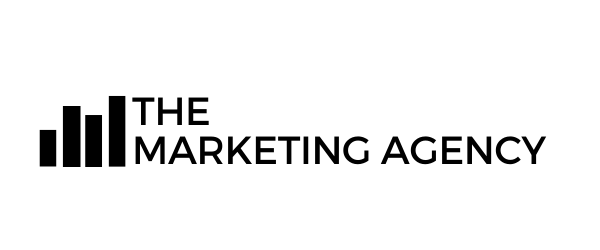How to Build The Ultimate Webinar Funnel
Are you among the 60% of marketers using webinars to expand their reach and boost their sales? If you aren’t then I have no idea why you’re letting these increased leads and attainable sales pass you by. Webinar marketing not only boosts your brand awareness and drives sales, they’re also incredibly easy to set up and deliver.
If you’ve ever given a sales pitch or presented a PowerPoint before, you already have a few of the skills needed to do so Here at The Marketing Agency we’ve already set up dozens of webinars for our clients, so here’s a brief breakdown on everything you need to know to turn your winning pitch into a webinar presentation and get your audience smashing that “click here to buy” button.
What Is a Webinar Funnel
You’ve probably seen or created a sales funnel before. You create awareness about your goods or service and then through the pipeline land the sale. A webinar funnel is much the same in that it begins with gathering an audience and leading them to purchase.
This is first achieved by getting traffic through awareness via online ads (more on that in a minute). However, the processes in the pipeline before the purchase will now include the registration, the webinar itself, and following up afterwards.
Remember that not everyone you engage with through your initial advertising is going to stick with you through every stage of the funnel (some might not even stick around for the entirety of the webinar), but that’s the very nature of funnels themselves. Webinars are about capturing the right leads to nurture and also qualify them.
To do all that thought you have to start at the very beginning of the webinar funnel process. So without further ado…
PRE-WEBINAR
This may be a no brainer but before you begin webinar marketing (or any marketing) you first have to decide what it is you’re offering. For new businesses or startups, this may be your entire M.O. or if you’re more established a new product or venture. This is where your pitch-savviness comes in. you’ve already established what it is you’re wanting people to buy or invest in, now you’ve got to convince them to do it.
The best way to begin this is to attach a personal story to what is your offering. If you don’t relate to your product, why should others? Your personal story will also help you deliver and lead a compelling webinar later on. Like any product or service, your webinar should also provide customers with the concrete solution to the problem your business is solving.
This is going to be presented in your webinar as well, so determining this at this now will make everything else go smooth. You’ll also need to end your webinar with a compelling call to action.
A good CTA will tell someone what they should do, and give them the motivation to do so. This is the purpose of your webinar. It’s what you want your audience to download, sign up for, or purchase. It should be brief, strong, and personable.
Bad CTA: Click Here!
Good CTA: Start Your Adventure Now!
If you’re having difficulty filling out the content portion of your webinar, or you don’t know if your initial ideas are what your audience wants, the best way to combat this is to simply ask.
Pose a question to your followers on social media or your email list as to what they want to know, what (if anything) they’re confused about, or simply any general questions they may have regarding your specific field. Depending on the response a lot of these can bulk up the webinar.
After talking to your audience, it’s now time to invite them to your webinar. The best way to do this is to build FaceBook Ads and send our webinar emails for webinar leads. The best thing about FaceBook is that information can be shared, so if one of your leads finds value in your webinar, they’re more likely to share it with their following which will increase your scope.
For FaceBook ads ensure your headlines are no more than 25 characters with the ad text being no more than 125. Again, be compelling and personal (as much as you can with the character count) and also include relevant emojis as visual media makes users stop and read posts more often.
You should create 5 webinar invite emails to be mailed out at different times throughout the funnel: the same day, 1 week out, 4 hours out, and 1 hour our. This way you’re reminding your audience about the webinar without spamming them or coming across too desperate.
Your emails should include the time of the webinar, a brief about the topics, and of course a registration link. You can also include images or a quick invite video to entice registration but to also show that you’re personable and an authority figure on the subject.
THE WEBINAR
Now that everyone is invited and their Google Calendar notifications are set it’s time to create the webinar. The platform you host your webinar will be up to you (we’re privy to the user-friendly Webinarjam). It’s important to pick a platform that lets you save your webinar, or allows you to upload them to your YouTube channel directly (so you can link them out later).
It’s also important that you check out the usability of the webinar platform before you host your webinar. There’s nothing worse than wasting your lead’s time with glitches or snafus that you don’t know how to fix quickly if they arise during your webinar.
Compiling you slides should be a relatively simple process; who knows your product better than you? Begin with a brief introduction to your business. Then introduce yourself, your background, and why it is you chose to start your specific business.
Then move on to the who-what-where-how-and-why’s of the product or service you’re marketing and relate it to the problem you’re solving. Again make this as personal as possible to keep everyone’s attention. It can also be helpful to pull direct pages from your website and explain them audibly to your audience as this can help some better understand concepts or stats they may be unfamiliar with or have trouble understanding.
Your webinar should always conclude with a Q&A and of course your CTA. Keep mind webinars should be between 30 and 45 minutes long, so keep your points as concise as possible and try not to fill them with too much flowery language or confusing jargon.
Lots of marketers find value in recording a demo of their webinar. This can be done with your webcam on your phone and not necessarily the platform. This can help you understand where to position yourself in frame and the effectiveness of your audio equipment.
It can also determine if the location you want to host your webinar in has lots of background noise or echoe (ie choose a new location or better equipment if you find this isn’t up to snuff). It can also be beneficial to record or practice some questions that might be directed your way.
This allows you to sharpen your ability to think on your feet and reduce any dead air. Imagine watching an interviewer saying “uhhhhhhmm” constantly during their delivery? Yeah, not the most professional or convincing. You should be well enough rehearsed to avoid any “hrmmmm”s but, being over rehearsed can make you feel robotic and can also throw you off your game if an audience member throws any curveballs at you.
This tactic can be very effective when combined with the right SEO services. Take a holistic approach to providing value and consider all the different applications that can be applied to the content.
POST WEBINAR
The webinar may be over, but that doesn’t mean all your sales are set in stone. There’s still time to turn your webinar leads into sales and your ROI to improve. As soon as the webinar is over send an email to everyone that registered. Leads can grow cold after any kind of live event, so a prompt follow-up is crucial.
You’ll want to nurture three groups of registrants; those that stayed for the full webinar, those that stayed for 45 minutes, and those who didn’t attend at all. Include a brief recap of what you talked about (or of what some may have missed) and be sure to include a link to relevant landing pages.
These should also be sent out 3 days, 1 week, 2 weeks, and 3 weeks after the webinar. Don’t come across too pitchy, if some registrants are still unsure provide them with more resources and the ability to follow up with you at any time. Now is also a good time to upload clips of your webinar to any relevant pages or your website itself.
Post webinar is the perfect time tract registrants based on attendance and which leads you converted. This will help you compare other metrics and also influence how you conduct webinars in the future.
Our clients have found great success in webinars because it gives a face to your business and also makes others feeling they’re interacting with an actual human being instead of being spammed by a bot. Thanks for reading and I look forward to dropping in on one of your webinars soon!
Google is a powerhouse that offers many power tools at our disposal. ‘People also search for’ is one of those indispensable SERP features that are both free and easy to use. Mind you, PASF wasn’t necessarily created for our purposes, although our use for it didn’t go unrecognized by its creators.
Having a website for your business is obviously essential if you plan on making any money with it. If you don’t have some sort of online presence what are you even doing reading this, start making some profiles ASAP.
When it comes to engaging with customers, one of the best ways to achieve that goal is through email marketing. If a person has signed up to receive your newsletter, then you can be assured that they want to hear from you.

